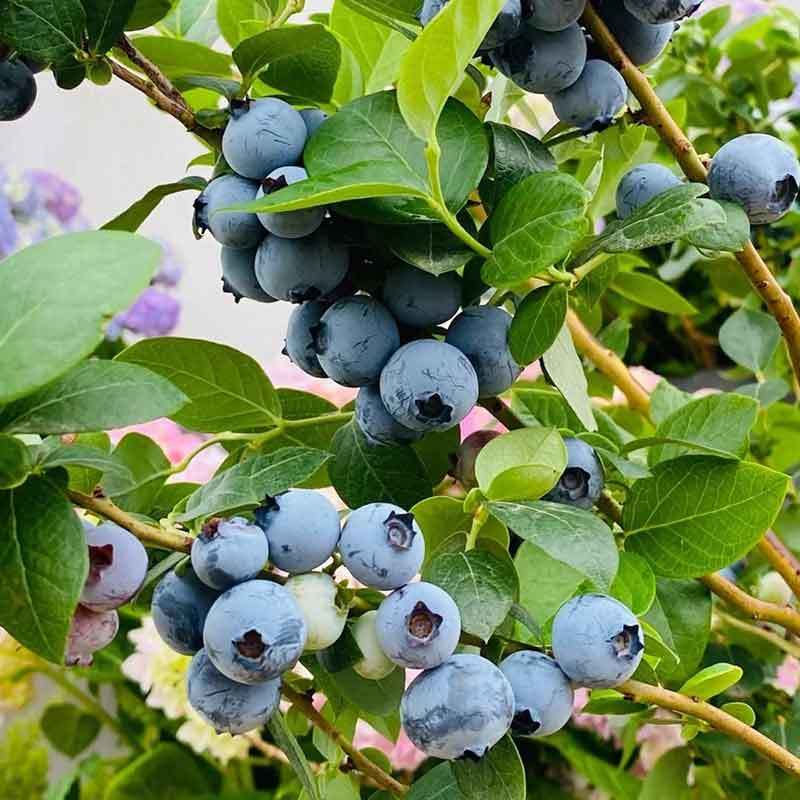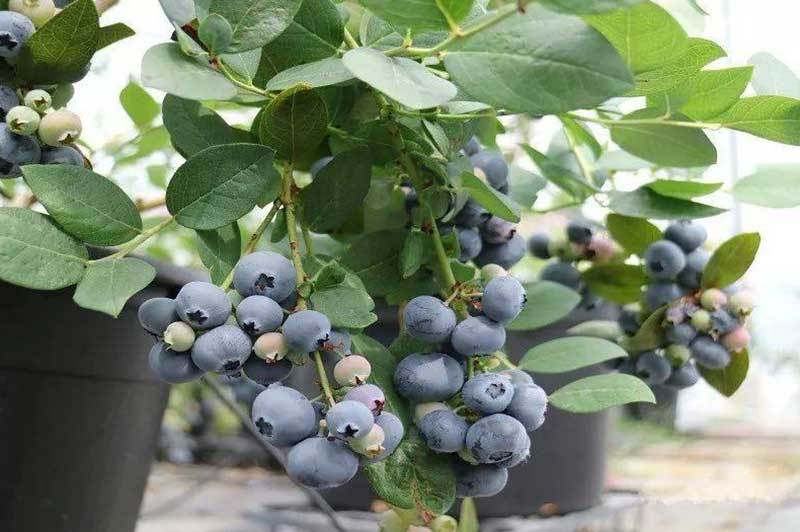Is My Blueberry Bush Dead? A Comprehensive Guide to Diagnosing and Reviving Your Blueberry Plant
Introduction
Blueberries are a popular fruit for home gardeners and commercial growers. They add beauty to landscapes around the world. You may be disheartened when a beloved blueberry bush starts to show signs of distress.
How to tell if a blueberry bush is dead? Knowing when and how to care for your blueberry bush is essential. Just carefully diagnose the cause and follow a few simple steps. It may come back to life. You will enjoy delicious berries for seasons.
This guide has discussed the importance of diagnosing any distress in a blueberry bush. We also provide guidance on reviving them. With careful attention and proper care, you will save blueberry bush even after showing signs of distress.
Understanding Blueberry Plants
Blueberry bushes are a type of shrub that produces sweet and tart berries. With proper care, these plants can produce an abundance of delicious fruit for years. To keep your blueberry bush healthy, you must understand its characteristics and the optimal growing conditions for it to thrive.
Characteristics: Blueberry bushes have shallow root systems that provide them with stability in windy weather. Depending on the variety, they can grow anywhere between 2 and 8 feet tall and wide, forming dense thickets. Pruning is recommended every few years to maintain their shape and enhance fruiting potential.
Different varieties of blueberries require unique soil pH levels for optimal growth. Some prefer acidic soils while others perform better in neutral or alkaline soils.
Optimal growing conditions: Blueberry bushes require at least 6 hours of direct sunlight per day to reach their fruiting potential. This is especially true for southern highbush varieties, which need the most sun exposure compared to other types.
Blueberries prefer slightly acidic soil with a pH range between 4.5 and 5.5. This creates an environment where nutrients are readily available for uptake by the plant's shallow roots.
Additionally, blueberry plants benefit from good drainage and plenty of organic matter like leaf mold or wood chips. You should avoid temperature extremes. Some cold hardy varieties can survive when temperatures are down to -20°C. Others may only survive up to -10°C.

Is My Blueberry Bush Dead?
How to tell if blueberry bush is dead? If you’re concerned that your blueberry bush may not be doing so well, you can look out for some signs. Wilting leaves and branches is a sign of dehydration or nutrient deficiencies.
You should differentiate between temporary wilting due to stress from extreme temperatures or soil changes and permanent damage. If the wilting persists after normalizing conditions, this could indicate irreversible damage to the plant.
Blueberry bush leaves turning brown: Discolored or yellowing leaves can also signify an underlying issue with your blueberry bush's health. Nutrient deficiencies and excesses in the soil can cause discoloration. This may result in paler or yellowish colors rather than the dark green color of healthy leaves. Common nutrient-related issues include nitrogen deficiency and iron chlorosis.
If you find blueberry leaves turning brown and falling off, it is important to take corrective action. You can start by testing the pH of your soil. It is better within a suitable range for blueberry bushes (between 4.5 and 5.5). If not, you may need to adjust the acidity with sulfur or lime.
Additionally, you can apply organic matter such as compost or manure. This can increase fertility levels and add nutrients back into the soil. Finally, regularly water your blueberry bush according to its needs. Too much or too little water can cause issues.
Lack of fruit production: There are a few possible causes of limited or absent fruiting. First, your bush is simply too young and hasn’t had enough time to produce fruit yet. Blueberry plants usually take around three years until they can produce fruit.
The plant has gone through natural age-related decline, where it produces less and less fruit each year as it ages. If this is the case, there’s not much you can do. Just provide soil amendments and pruning regularly.
On the other hand, a lack of fruiting could be caused by some other issues, such as incorrect pruning or improper soil pH. You should take steps to correct these issues if that’s the case. This will get your plant back on track and produce fruit once again.
Pest and disease infestation: Aphids, mites and caterpillars are common pests. They can wreak havoc on healthy plants and prevent them from flowering or fruiting. There are some common fungal diseases like powdery mildew and root rot.
You should identify the type of pest or disease. Then, you can treat it properly with insecticide or fungicide. If your potted blueberry bush isn't affected by any pests or diseases, then you can also provide it with some extra care.
Make sure the soil is amended correctly and the pH level is ideal for blueberries. Feed it regularly with a balanced fertilizer. Prune it properly each year. It should have ample amounts of sunlight, air circulation and water. These steps can help get your plant back on track and produce delicious fruits in no time!
Steps to Revive a Blueberry Bush
Assessing the plant's health: How do i know if my blueberry bush is dead? You should assess a blueberry bush before attempting any repairs or reviving it. Conduct all parts of the plant for signs of damage or disease.
For example, its roots, stems, leaves and overall appearance. Look out for wilted leaves, discoloration, rot and pest infestations. These indicate that your bush is in poor health and needs extra attention.
You can use an appropriate testing kit to test the soil pH and nutrient levels. Blueberries prefer slightly acidic soil with a pH between 4.5-5.5. You can take measures to amend it if the soil has either too much acidity or not enough. You can use organic matter to adjust the pH of soil and add essential nutrients.
Pruning and trimming: If your bush has dead or damaged branches, prune these out carefully using clean pruning shears or scissors. Make sure all tools are sharpened prior to use. So that you can make precise cuts without causing additional damage to the plant. Cutting away diseased parts also helps prevent further spread of infection throughout the bush.
Proper pruning techniques help promote healthy growth in blueberry bushes. Aim for an open center with evenly spaced branches radiating outward around it in a vase shape. So that air and sunlight can circulate through the bush. If you find any branches that are too close together, you can cut them back accordingly.
Soil amendments: They are key elements to helping your blueberry bush live a long and healthy life. Adjusting soil pH and improving drainage if necessary. This will help ensure the proper nutrient uptake by your plant.
Blueberries prefer soil with a pH between 4.5 - 5.5. So test your soil to make sure it falls within this range or adjust accordingly. Additionally, poorly draining soils can cause root rot and other issues for the plant due to waterlogging. So consider adding organic matter such as compost if needed.
Fertilization: You can choose a fertilizer with high in phosphorous and potassium but low in nitrogen. Follow the instructions on the package to determine how much and how often to fertilize. Generally speaking, it’s best to apply fertilizer several times throughout the growing season rather than all at once.
Watering: You should establish a consistent schedule when watering your blueberry bush. Water your plant deeply and thoroughly, about 1-2 inches per week. But don’t overwater or let standing water accumulate in the soil. Overwatered blueberry bush may root rot. When irrigating with an automatic system, you should set for the appropriate amount of time. Don't give too much or too little water.
Pest and disease management: Finally, pest and disease prevention is essential in keeping your blueberry bush healthy. You can use different organic and chemical treatments for common pests, such as birds, slugs, aphids and thrips. Additionally, cleaning up plant debris regularly and mulch can help prevent diseases such as leaf spots.

Preventive Measures for Healthy Blueberry Plants
When keeping a blueberry bush healthy and productive, prevention is key. If you take some simple steps before planting your blueberry bushes, they will thrive for many years.
Choosing the right blueberry varieties: You must select varieties suited to your climate and growing conditions. Highbush, lowbush or hybrid varieties may be more suitable in different locations. It depends on the environment and soil type.
You should also consider how much sun each variety needs in order to produce abundant berries. For example, northern highbush blueberries prefer full sunshine while southern highbush need less direct sunlight.
Proper planting techniques: Once you’ve chosen the right variety for your garden, follow proper planting techniques for optimal growth and health. You can grow blueberry bushes in well-drained soil. Space them six to eight feet apart. Make sure the crown is level with the soil’s surface. Your plant will have enough room for its root system and won’t be prone to disease or fungal growth.
You can apply mulch around the base of each bush, preferably with an organic material such as pine needles or bark chips. This not only helps retain moisture but also prevents weeds from competing with your plants for nutrients and water.
Regular maintenance and care: It is crucial for keeping blueberry bushes healthy and productive. Pruning should be done on an annual basis, usually during late winter before new growth begins.
Thinning is also important, as overcrowded bushes can lead to poor air circulation and an increased risk of disease. Proper fertilization and soil testing should be done on a regular basis, as well. Nitrogen-rich fertilizers are usually the best choice for blueberry plants.
Conclusion
In conclusion, it’s important to take proactive steps in properly diagnosing. You should revive your blueberry plants when they appear to be struggling. This article has detailed many of the common causes for a blueberry bush dying. For example, improper planting, pest infestations and disease outbreaks.
So, don’t panic if you think your blueberry bush might be dead or dying. There could still be hope for reviving it. Take the necessary steps outlined in this article. Reach out for help from a professional gardener if needed. You may just save these shrubs yet with a bit of work and dedication.
You can take all these steps. Replace your blueberry bush if you still can't see any signs of recovery. You should research the types of blueberry bushes, soil type and growing conditions. Your new plant will have plenty of nutrients. They will have a healthy start!
Blueberry bushes can produce delicious fruits for years if you take care of them correctly. These shrubs also provide wonderful shade for other garden ornaments. They are also beneficial for pollinators. They will bring you lots of joy and satisfaction.


